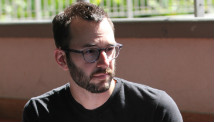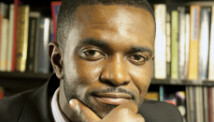NEWPORT, R.I. As electricity returns and highways reopen, Northeast residents are getting back to their weekday routines following the massive snowstorm that had millions digging out from New York to Maine.
But the routine for some New Englanders will be disrupted by school and workplace closings, while residents of New York's Long Island anticipate the reopening of a major roadway. For some, there's also a new worry: the danger of roof collapses as rain and warmer weather melt snow.
The storm that slammed into the region with up to three feet of snow was blamed for at least 15 deaths in the Northeast and Canada, and brought some of the highest accumulations ever recorded.
Still, coastal areas were largely spared catastrophic damage despite being lashed by strong waves and hurricane-force wind gusts at the height of the storm.
Hundreds of people, their homes without heat or electricity, were forced to take refuge in emergency shelters set up in schools or other places.

Powerful blizzard descends on Northeast
Utility crews, some brought in from as far away as Georgia, Oklahoma and Quebec, raced to restore power. By early Monday, region-wide outages had dropped from some 650,000 in eight states at their highest to 149,970 -- more than 126,000 of them in Massachusetts, where officials said some of the outages might linger until Tuesday.
"For all the complaining everyone does, people really came through," said Rich Dinsmore, 65, of Newport, R.I., who was staying at a Red Cross shelter set up in a middle school in Middletown after the power went out in his home on Friday.
Dinsmore, who has emphysema, was first brought by ambulance to a hospital after the medical equipment he relies on failed when the power went out and he had difficulty breathing.

Northeast sees record snow fall
"The police, the fire department, the state, the Red Cross, the volunteers, it really worked well," said the retired radio broadcaster and Army veteran.
President Obama declared a state of emergency for Connecticut, allowing federal aid to be used in recovery.
CBS News correspondent Miguel Bojorquez reports that Hamden, Conn., about 80 miles from New York City, got the deepest snow: 40 inches. The blizzard dumped five inches of snow per hour there for some time.
Driving bans were lifted and flights resumed at major airports in the region that had closed during the storm, though many flights were still canceled Sunday. Public transit schedules were being restored.
The Boston-area public transportation system, which shut down on Friday afternoon, was expected to resume full service on Monday, albeit with delays.
Massachusetts Bay Transit Authority (MBTA) General Manager Beverly Scott, speaking at a Sunday afternoon press conference, noted that snow accumulation, downed tree limbs and other damage from high winds and the overall age of the transit system made restoration challenging, reports CBS Boston station WBZ.
The Metro-North Railroad expected to resume much of its train service on its New York and Connecticut routes while the Long Island Rail Road said commuters could expect a nearly normal schedule.
"A lot of progress has been made," said Salvatore Arena, a spokesman for the Metropolitan Transportation Authority, which operates Metro-North.
Some public schools canceled classes on Monday, including in Boston, Providence and on Long Island, while local governments in some areas told non-essential workers to take the day off.
On eastern Long Island, the harrowing images from New York's slice of the massive snowstorm -- people stranded overnight, cars abandoned on long stretches of drift-covered highways -- were slowly erased Sunday as hundreds of snowplows and heavy equipment descended to try to help clear the way for Monday's commute.
Long Island was slammed with as much as 30 inches of snow, which shut down roads, including the Long Island Expressway. A 27-mile stretch of the road was closed Sunday and early Monday for snow-removal work.
Gov. Andrew Cuomo said more than a third of all the state's snow-removal equipment was sent to the area, including more than 400 plow trucks and more than 100 snow blowers, loaders and backhoes.
"The massive amount of snow left behind effectively shut down the entire region," Cuomo said.
On Sunrise Highway, which runs parallel to the Long Island Expressway, Dennis Lawrence, of Bellport, N.Y., had already spent 90 minutes digging out the car he had abandoned and had at least another 30-60 minutes to go on Sunday. He left it there Friday after getting stuck on his way home from his job in New York City.
"The car was all over the place, it just slid over and wouldn't move," the 54-year-old elevator mechanic said. "I finally decided today to come and get it."
Boston recorded 24.9 inches of snow, making it the fifth-largest storm in the city since records were kept. The city was appealing to the state and private contractors for more front-end loaders and other heavy equipment to clear snow piles that were clogging residential streets.
The National Weather Service was forecasting rain and warmer temperatures in the region on Monday, which could begin melting some snow but also add considerable weight to snow already piled on roofs, posing the danger of collapse. Of greatest concern were flat or gently-sloped roofs and officials said people should try to clear them -- but only if they could do so safely.
"We don't recommend that people, unless they're young and experienced, go up on roofs," said Peter Judge, spokesman for the Massachusetts Emergency Management Agency.
In Middlefield, Conn., two cows were killed when the roof of a barn gave way under the weight of heavy snow, one of two such incidents in the state that prompted agriculture officials to issue an advisory to farmers.
Officials also continued to warn of carbon monoxide dangers in the wake of the storm.
In Boston, two people died Saturday after being overcome by carbon monoxide while sitting in running cars, including a teenager who went into the family car to stay warm while his father shoveled snow. The boy's name was not made public. In a third incident, two children were hospitalized but expected to recover. In Webster, a 60-year-old off-duty member of the Worcester Fire Department died Saturday after suffering a heart attack while clearing snow at his home.
A fire department spokesman said in each case, the tailpipes of the cars were clogged by snow.
In Maine, the Penobscot County Sheriff's office said it recovered the body of a 75-year-old man who died after the pickup he was driving struck a tree and plunged into the Penobscot River during the storm. Investigators said Gerald Crommett apparently became disoriented while driving in the blinding snow.
Christopher Mahood, 23, of Germantown, N.Y., died after his tractor went off his driveway while he was plowing snow Friday night and rolled down a 15-foot embankment.
In Massachusetts, eight teams were formed to assess damage from flooding along the state's coastline, with the hardest hit-areas including historic Plymouth and portions of Cape Cod.
"Considering the severity of the storm, the amount of snow and the wind, we've come through this pretty well," Gov. Deval Patrick told the CBS News broadcast "Face The Nation" Sunday after meeting with local officials in Plymouth.
The U.S. Postal Service said that mail delivery that was suspended in the six New England states, as well as parts of New York and New Jersey, because of the snowstorm would resume Monday, where it is safe to do so.




 iPhone, iPad and Mac are trademarks of Apple Inc., registered in the U.S. and other countries. App Store is a service mark of Apple Inc.
iPhone, iPad and Mac are trademarks of Apple Inc., registered in the U.S. and other countries. App Store is a service mark of Apple Inc.










